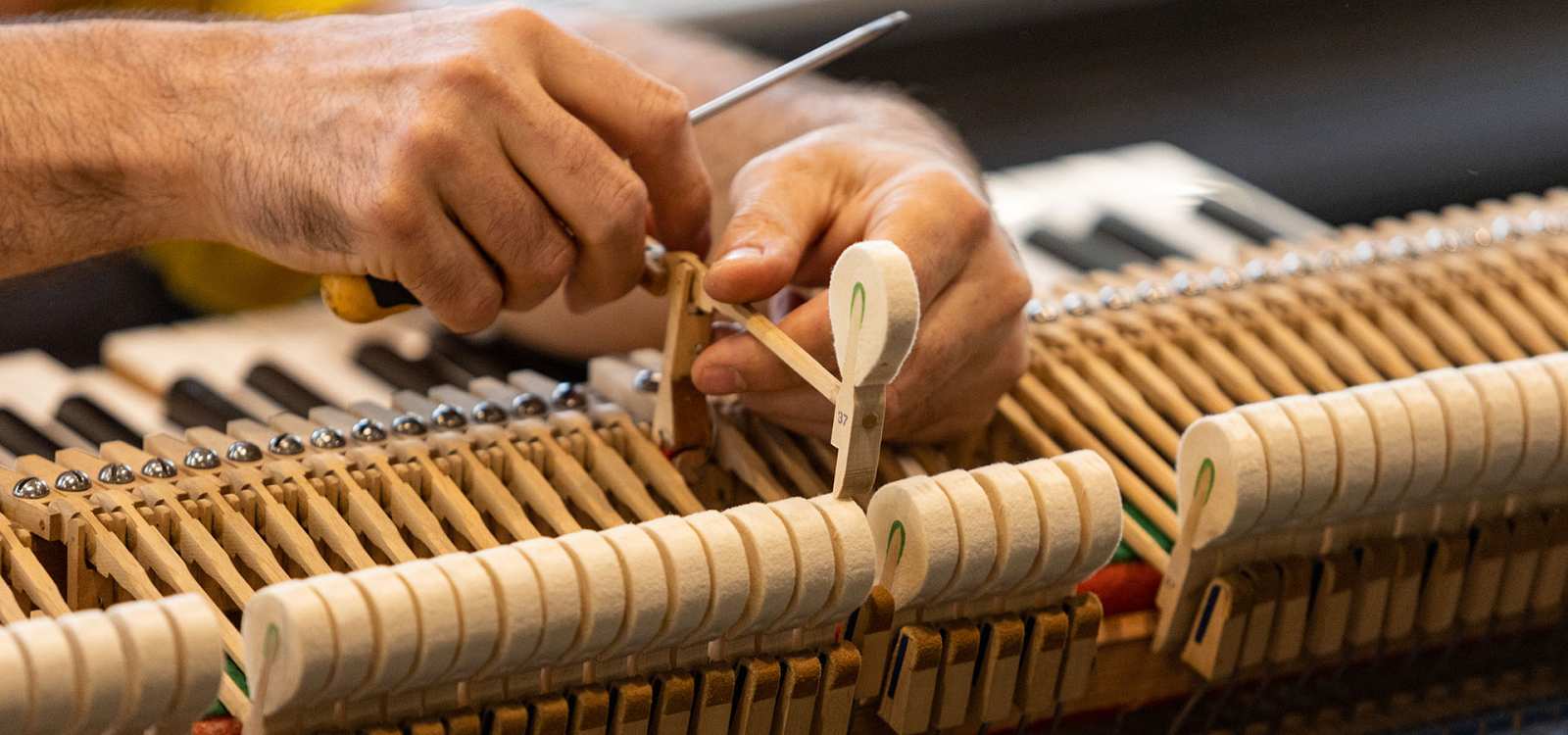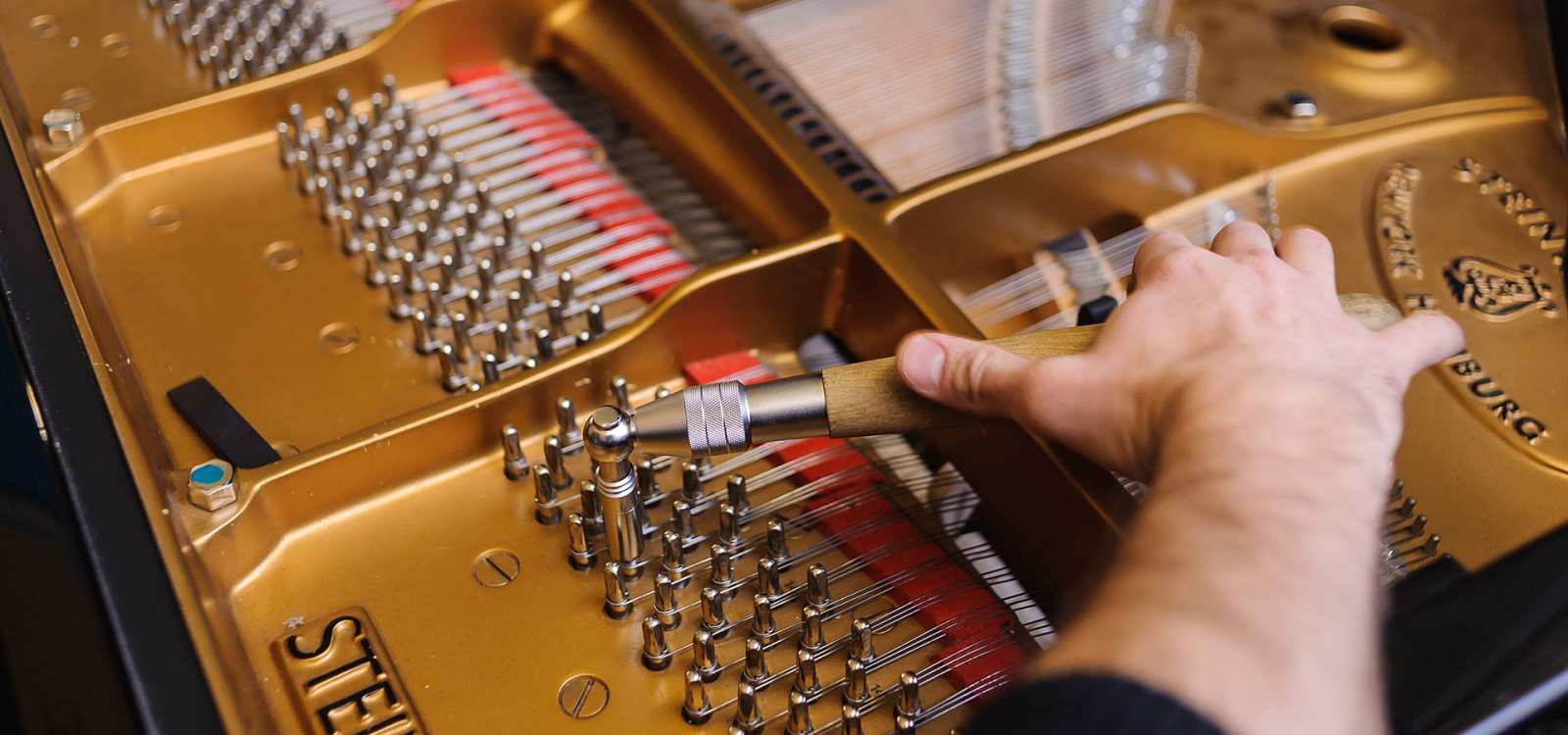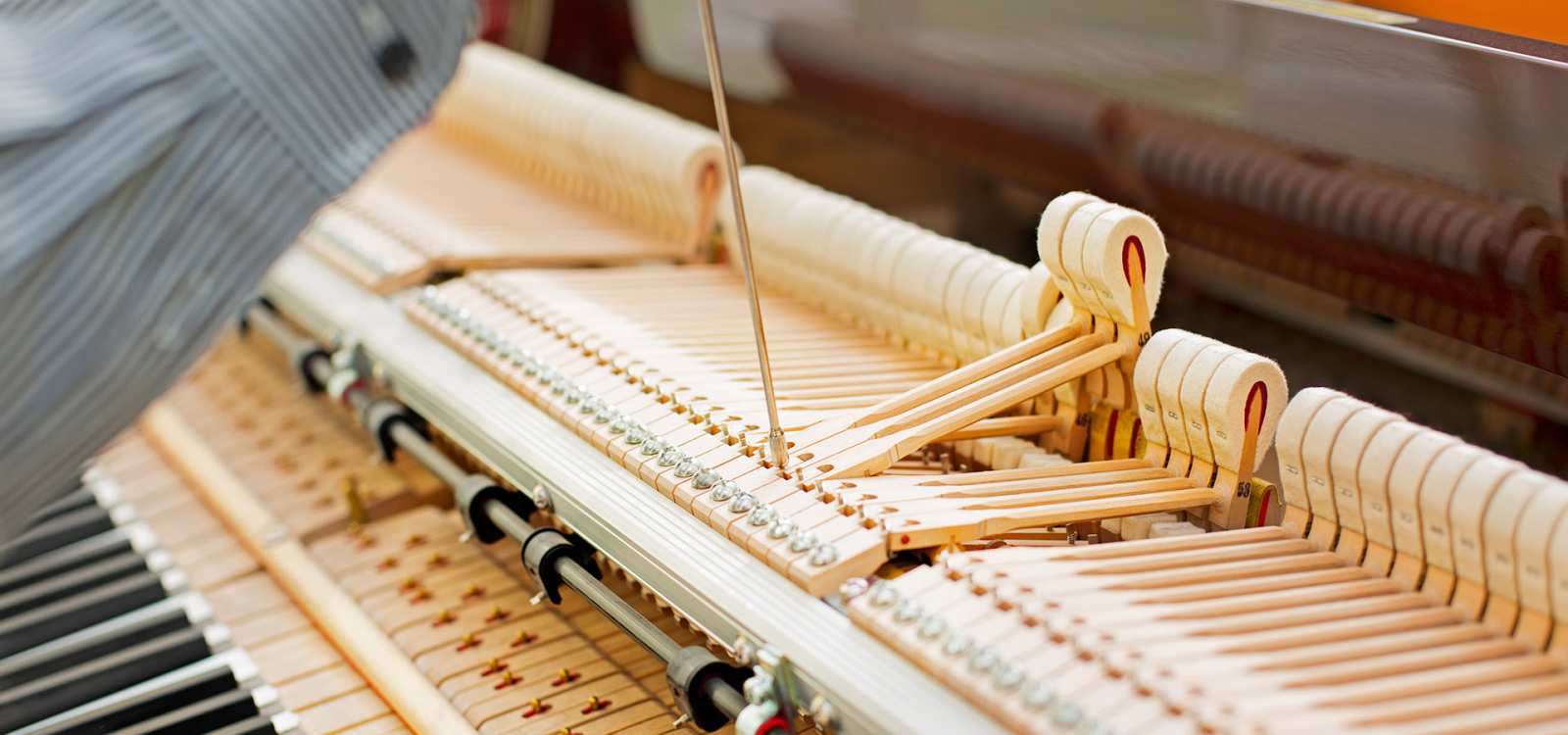Action repair
Since pianos contain approximately twelve thousand separate parts, it is not surprising that occasional repairs are necessary. Piano repair is necessary when parts are broken or worn to the point where they cannot properly perform their function. Sometimes this involves replacing a broken part with a new one. Other times, the broken part can be repaired by replacing worn felts or leathers. Over time, partially or completely replacing entire parts of a piano may be necessary, in which case it is a significant replacement of worn parts and a renewal of the piano to new or near-new condition.
Every part of the piano is subject to replacement or refurbishment. Typically, the soundboard and the cast-iron plate are cleaned and refinished. The action is usually repaired and regulated. New strings, tuning pins, keys, hammers, dampers, and pedals are installed.
Strings
If a string breaks on your piano, don't throw it away. To ensure the best possible replacement, the original string must be accurately measured. This is particularly important for copper-wound strings. Also, keep in mind that it may take several months for a new string to fully stretch and settle into the correct pitch. Typically, I recommend tuning a newly replaced string two or three times in the weeks following installation to bring it into proper tuning.
Tuning Pins
The least invasive way to deal with tuning pins is simply to drive them slightly deeper. This process should be done for all the tuning pins on the piano.
Broken Hammer Shanks
When the shank of a hammer on a piano breaks at a point that makes it impossible to repair, the shank must be replaced.
For Upright Pianos
Upright piano hammer shanks are custom-cut from one of the few available diameters. Although removing the old shank and accurately installing a new one is a fairly complex job, the standard sizing of the part makes the process relatively straightforward.
For Grand Pianos
Grand piano hammer shanks are available in a variety of different designs, so first, the correct model needs to be identified. Ideally, the replacement will fit perfectly as is, but some additional time may be required to slightly modify it to fit your specific piano. Additionally, the old hammer head must be removed, and the center pin will need to be replaced. All in all, this makes the shank replacement more time-consuming.
Action Parts
Replacing damaged action components is generally a very simple and quick procedure when it involves changing only one or two parts. However, if more than half a dozen or so of the same part have started to break, it is often worthwhile to replace the entire set.
Action Issues When Playing the Piano
When playing a piano, various types of problems can occur, including:
Stuck or jammed keys
Notes not sounding
Notes not damping
Notes not repeating
Hammers producing double tone (mandolin effect)
Hammers sticking to the strings
Noises, squeaks, and buzzing
For the most part, these problems are straightforward to fix. Unfortunately, they are challenging to diagnose without seeing the piano as there is such a variety of potential causes. It could simply be that a small piece of felt has become detached or that some other part of the action is worn or misaligned.
Objects Falling Inside the Piano Although objects falling inside rarely cause damage inside a piano, it is not advisable to play the instrument until one is certain. Even if the object has no apparent effects on the sound or mechanics of the instrument, it could subject internal parts to undue stress, potentially causing damage once those parts are in motion.
Complete regulation of the action, voicing, and tuning completes the work. This type of work may take months in the workshop, but the piano is restored to its original appearance and performance.

 Italian
Italian



